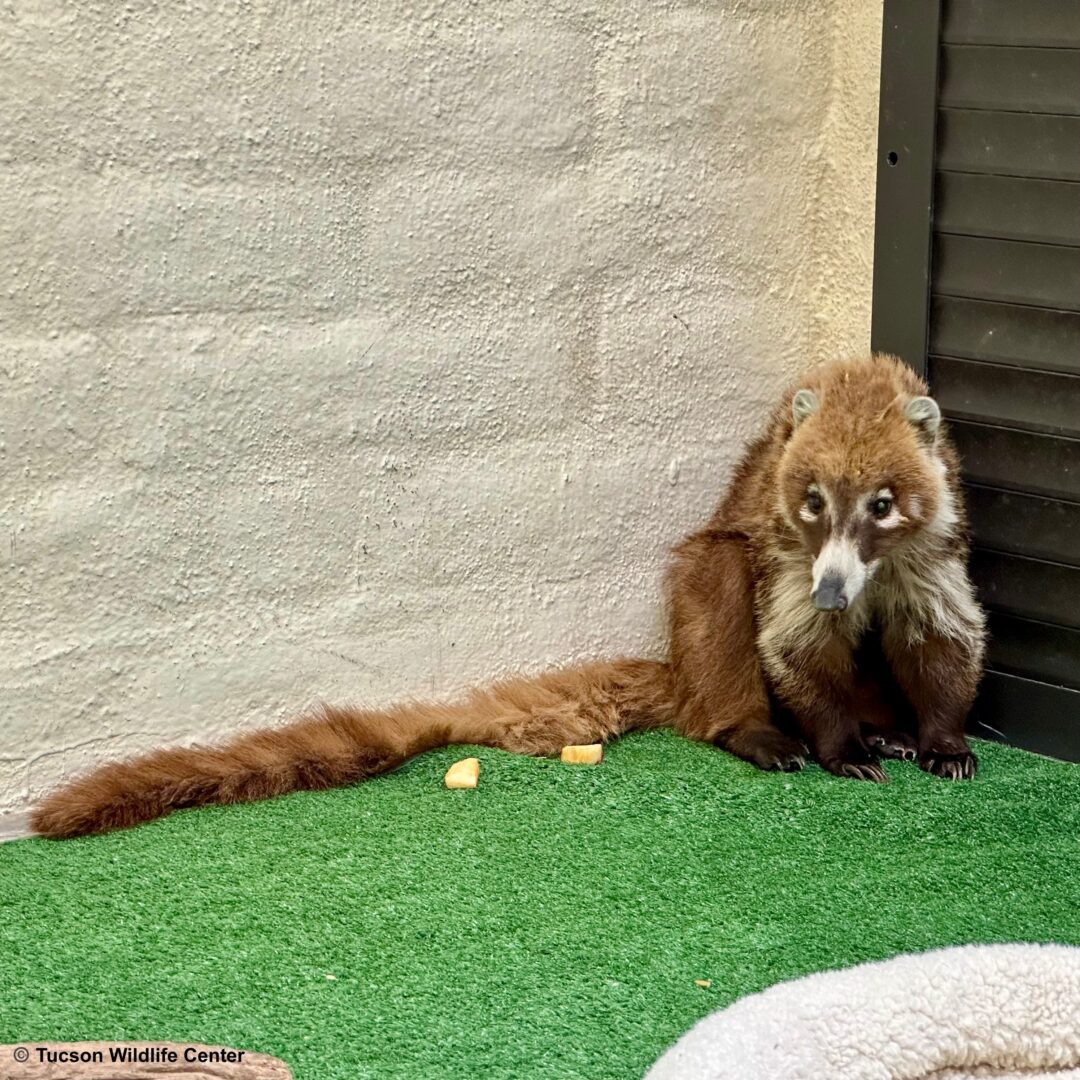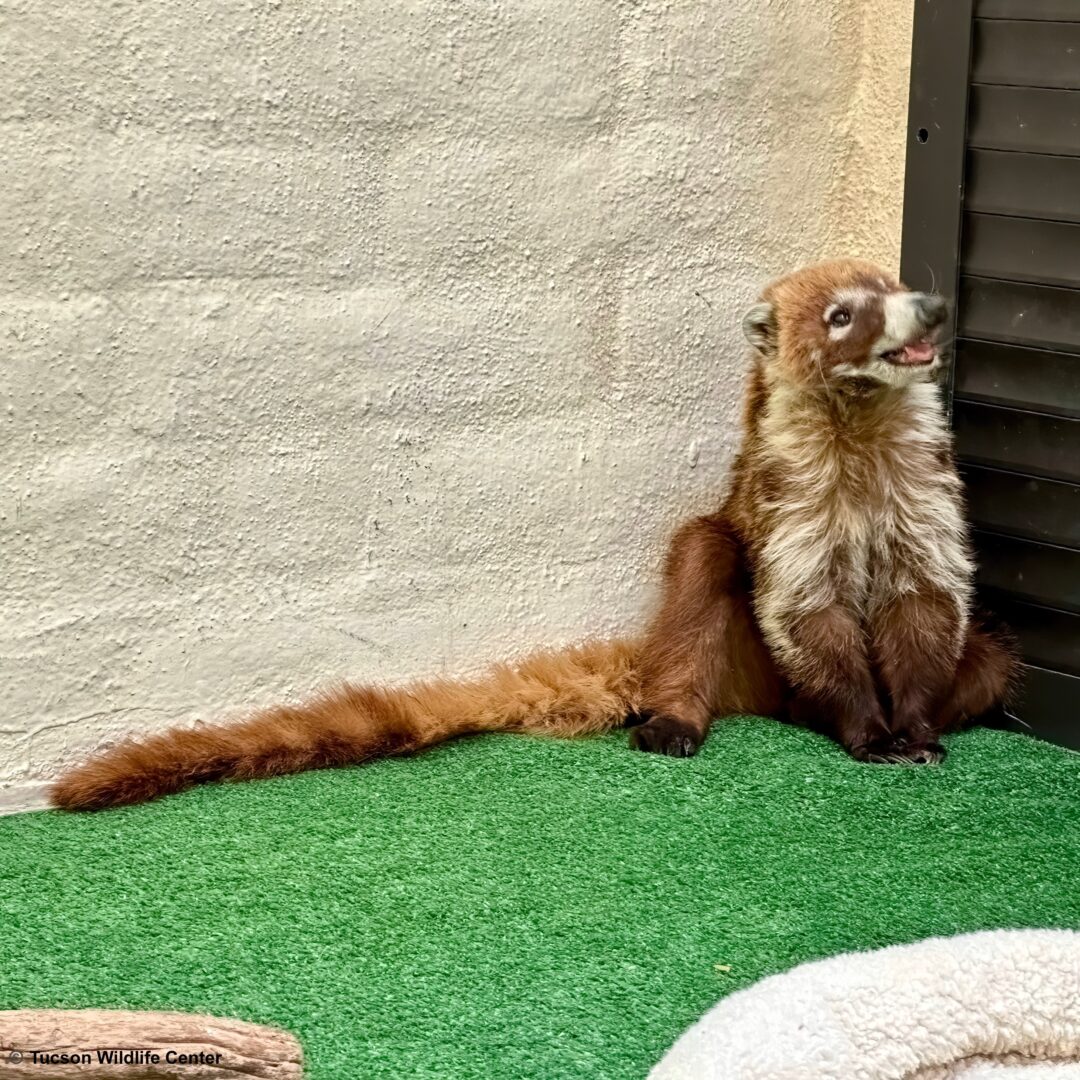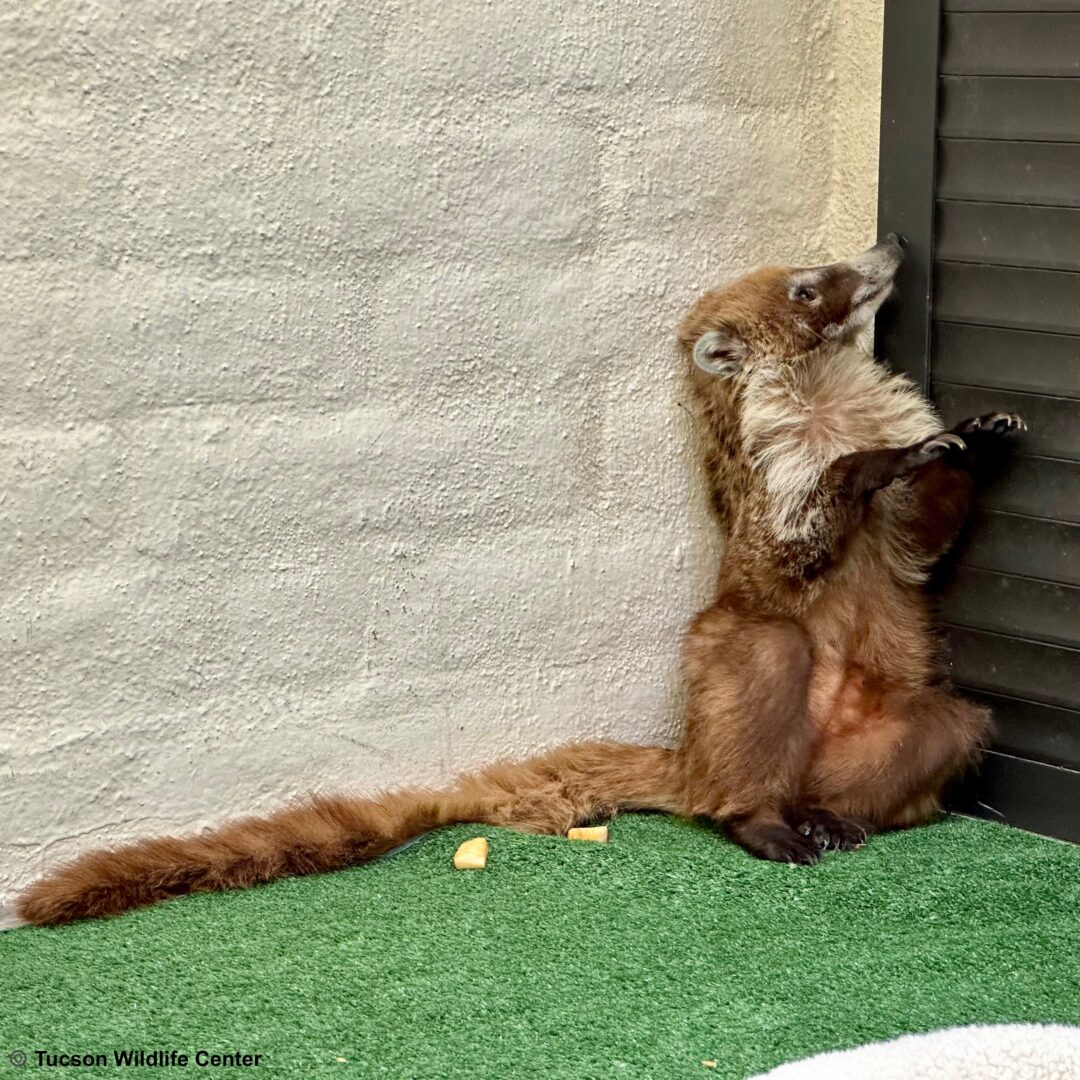
Coati
It’s a raccoon … It’s a ringtail … Its’s a coati! This juvenile female coati was brought to Tucson Wildlife Center after being found in the mountains, moving very slowly and cautiously as if she couldn’t see well. Upon admission, her intake exam revealed a corneal ulcer in her right eye … most likely resulting from a trauma or a scratch. TWC’s wildlife care team is treating her eye with an antibiotic/anti-inflammatory ointment, and we are hopeful for a full recovery and release back to the wild, and troop (family unit).
Though they may look like a combination of animals, coatis are officially part of the raccoon family. Unlike the raccoon though, coatis are social creatures that are active during the day. Interestingly, coati is not short for “coatimundi.” Females and their young form bands of 20 individuals or more, while adult males are solitary. This difference in social structure (and males being larger than females) confused biologists, who initially described the solitary males as a separate species. The use of “coatimundi,” meaning “lone coati” in Guarani (an Indigenous language of Brazil), for males reflects this error. Now, only lone males are sometimes called coatimundi, although they are coatis, too. **
** https://animals.sandiegozoo.org/animals/coati
If you would like to help patients like this Coati, click the donate button below.
Another way you can contribute is to visit our “wish list” on Amazon by clicking on the Amazon Wish List button below. We appreciate it, as will all the wild animals in our care!
Below is a short video of the coati




